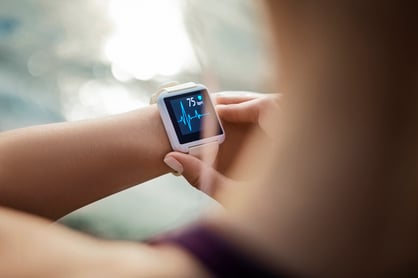 While training your cardiovascular system, it is important to understand how much you are stressing and overloading the system. Just like with your musculoskeletal system, there is a maximum rate your heart can achieve. The best way to discover this number is to undergo a maximal aerobic capacity test, but it isn’t necessarily practical or safe for all populations.
While training your cardiovascular system, it is important to understand how much you are stressing and overloading the system. Just like with your musculoskeletal system, there is a maximum rate your heart can achieve. The best way to discover this number is to undergo a maximal aerobic capacity test, but it isn’t necessarily practical or safe for all populations.
Calculating Your Maximal Heart Rate
A much easier way to determine your personal maximal heart rate is to use a predicted value. For the general population you can simply subtract your age from 220 and that would equal your age-predicted heart rate.
220 – (Age) = Age-predicted maximal heart rate (APMHR)
Now that you know your predicted maximal heart rate, you can figure out where your heart rate should be when exercising aerobically. The ranges are as follows:
- Very light: <30%
- Light: 30–39%
- Moderate: 40–59%
- Vigorous: 60–89%
- Near maximal: >90%
- APMHR x (desired percentage lower end) = Lower target heart rate
APMHR x (desired percentage upper end) = Upper target heart rate
Choosing the Right Range
So what do these ranges mean?
- If you are new to the gym, you probably want to start more in the very light to light range. This can prevent burnout and reduce the risk of injury. Starting lower and progressing the duration of the workout, the number of times you exercise per week, or the intensity is a great way to ease yourself into exercise.
- If you are looking to gain some cardiovascular fitness and reduce your risk for cardiovascular disease, you want to shoot for the moderate range. This will stress your system enough to see the benefits associated with cardiovascular training such as a lower resting heart rate.
- Finally, if you are looking to set a new personal best mile time or are training for the Mini-Marathon, having a few training days in the vigorous range to near maximal can really help overload your cardiovascular and reap the benefits.
Ask Your NIFS HFS
If you want to learn more about heart rate ranges, come to the Track Desk and ask one of our Health Fitness Specialists.
This blog was written by Grant Lamkin, NIFS Health Fitness Specialist. To learn more about the NIFS bloggers, click here.

